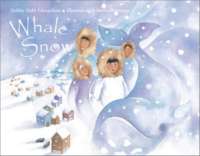
Amiqquq is excited when his family catches a bowhead whale. As his family prepares to celebrate the traditional Inupiaq whaling feast, Amiqqaq learns about the spirit-of-the-whale.
Materials from United States of America

Amiqquq is excited when his family catches a bowhead whale. As his family prepares to celebrate the traditional Inupiaq whaling feast, Amiqqaq learns about the spirit-of-the-whale.
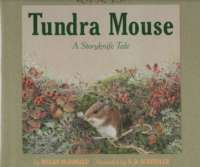
Using a traditional technique called storyknifing, two Yupik Eskimo sisters share a story about the mice that made a nest out of tinsel from the Christmas tree.
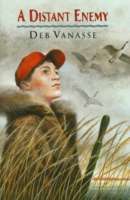
Joseph, a fourteen-year-old boy struggling with the reality that his white father left him and his Yup’ik mother when he was born, lashes out at others in many ways, but when he is saved by one of his supposed “”enemies,”” he begins to view things differently.
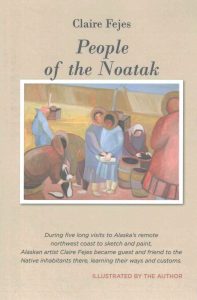 During five long visits to Alaska’s remote northwest coast to sketch and paint, the late Claire Fejes became guest and friend to the Native inhabitants there, learning their ways and customs. A personal narrative in text, drawings, and paintings, People of the Notatak concerns the people of two villages–Noatak, the summer settlement of a nomadic tribe that lives mainly in the wilderness interior, and Point Hope, whose economy centers around the hunting of the great bowhead whale.
During five long visits to Alaska’s remote northwest coast to sketch and paint, the late Claire Fejes became guest and friend to the Native inhabitants there, learning their ways and customs. A personal narrative in text, drawings, and paintings, People of the Notatak concerns the people of two villages–Noatak, the summer settlement of a nomadic tribe that lives mainly in the wilderness interior, and Point Hope, whose economy centers around the hunting of the great bowhead whale.
Claire captures the life of the Native Inupiat in Northwest Alaska, before outside influences changed their lives. In a few simple strokes, her drawings evoke the heart and life of the Inupiat. Thanks in part to her habit of journal-keeping, Claire was able to record what she had witnessed in her years of travel and painting up the Yukon River into the Arctic Refuge.
A native New Yorker, Claire received her art training at the Newark Art Museum and taught art until moving to Alaska. She wrote with rare insight and understanding about the intimate daily lives of mothers and fathers and their children, of husbands and wives and in-laws in the villages in which she lived, an aspect of Eskimo life rarely treated in books.
Originally published in 1966, People of the Noatak is an excellent portrayal of the Inupiat people before modern changes, a glimpse into the Inupiat world when traditional values and roots were strong.
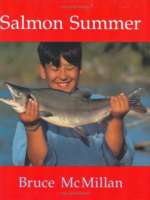
A photo essay describing a young native Alaskan boy fishing for salmon on Kodiak Island as his ancestors have done for generations.
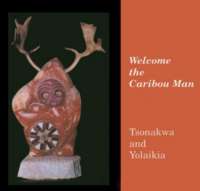
Abenaki artists Gerard Tsonakwa and his wife Yolaikia Wapitaska, working in stone, bone and wood, bring the ancient legends of the Abenaki people into the industrial age through juxtaposition of the stories with their masks and sculptures. This volume, illustrated with many of the works that have toured more than thirty museums since 1992, evokes ancient connections embodied in the legends and lore of traditional peoples.
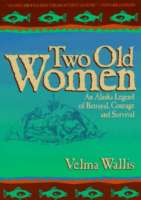
Based on an Athabascan Indian legend passed along for many generations from mothers to daughters of the upper Yukon River area in Alaska, this is the suspenseful, shocking, ultimately inspirational tale of two old women abandoned by their tribe during a brutal winter famine. Though these two women have been known to complain more than contribute, they now must either survive on their own or die trying. In simple but vivid detail, Velma Wallis depicts a landscape and way of life that are at once merciless and starkly beautiful. In her old women, she has created two heroines of steely determination whose story of betrayal, friendship,community, and forgiveness will carve out a permanent place in readers’ imaginations.
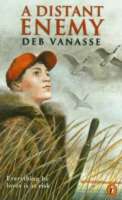
Joseph just wants to continue the traditions of the Yup’ik people. So when outside officials restrict fishing in his Alaskan village, he commits an anonymous act of vandalism in protest. But his new teacher finds out his secret. To make things worse, Joseph’s father, who left years ago, wants to see him again. Joseph isn’t sure who he can trust, but if he doesn’t trust someone, he’s headed for disaster. “Vanasse creates a vivid portrait of modern Eskimo lifestyles, conflicts and fears while rendering a sensitive account of one teenager’s coming of age.” — Publishers Weekly
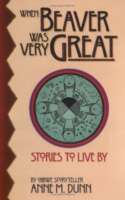
It happened in the long ago. . . . So begin many tales in this wonderful collection of traditional legends and recent writings by Ojibwe elder storyteller Anne Dunn. The short pieces range from folk tales of Native American origin myths (the antics of Beaver, Rabbit, Otter, Bear, and others) to nature writing and contemporary stories of peace, justice, and environmental concern. Brimming with insight, vibrant with strength and beauty, these indeed are stories to live by, for all ages. Divided into the four seasons of the year, many of the stories are perfect to be read aloud to children.
 Ride shotgun with the heroic mushers whose bravery inspired the Iditarod. In the winter of 1925, Nome, Alaska, was hit by an unexpected and deadly outbreak of diphtheria. Officials immediately quarantined the town, but the only cure for the community of more than 1,400 people was antitoxin serum and the nearest supply was in Anchorage—hundreds of miles of snowbound wilderness away. The only way to get it to Nome was by dogsled. Twenty teams braved subzero temperatures and blizzard conditions to run over 600 miles in six days in a desperate relay race that saved the people of Nome. Several of the dogs, including Togo and Balto, became national heroes. Today their efforts, and those of the courageous mushers, are commemorated every March by the Iditarod Trail Sled Dog Race. Jon Van Zyle’s stunning oil paintings capture the brutal conditions, pristine wilderness, and sheer guts and determination demonstrated by the heroic mushers and dogs.
Ride shotgun with the heroic mushers whose bravery inspired the Iditarod. In the winter of 1925, Nome, Alaska, was hit by an unexpected and deadly outbreak of diphtheria. Officials immediately quarantined the town, but the only cure for the community of more than 1,400 people was antitoxin serum and the nearest supply was in Anchorage—hundreds of miles of snowbound wilderness away. The only way to get it to Nome was by dogsled. Twenty teams braved subzero temperatures and blizzard conditions to run over 600 miles in six days in a desperate relay race that saved the people of Nome. Several of the dogs, including Togo and Balto, became national heroes. Today their efforts, and those of the courageous mushers, are commemorated every March by the Iditarod Trail Sled Dog Race. Jon Van Zyle’s stunning oil paintings capture the brutal conditions, pristine wilderness, and sheer guts and determination demonstrated by the heroic mushers and dogs.